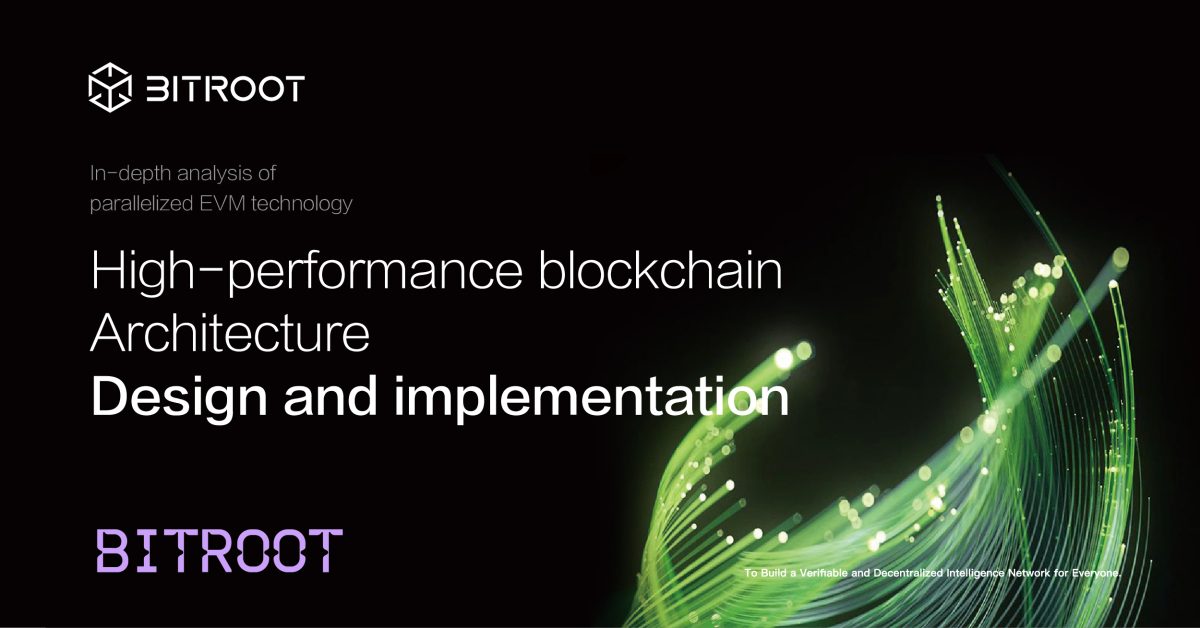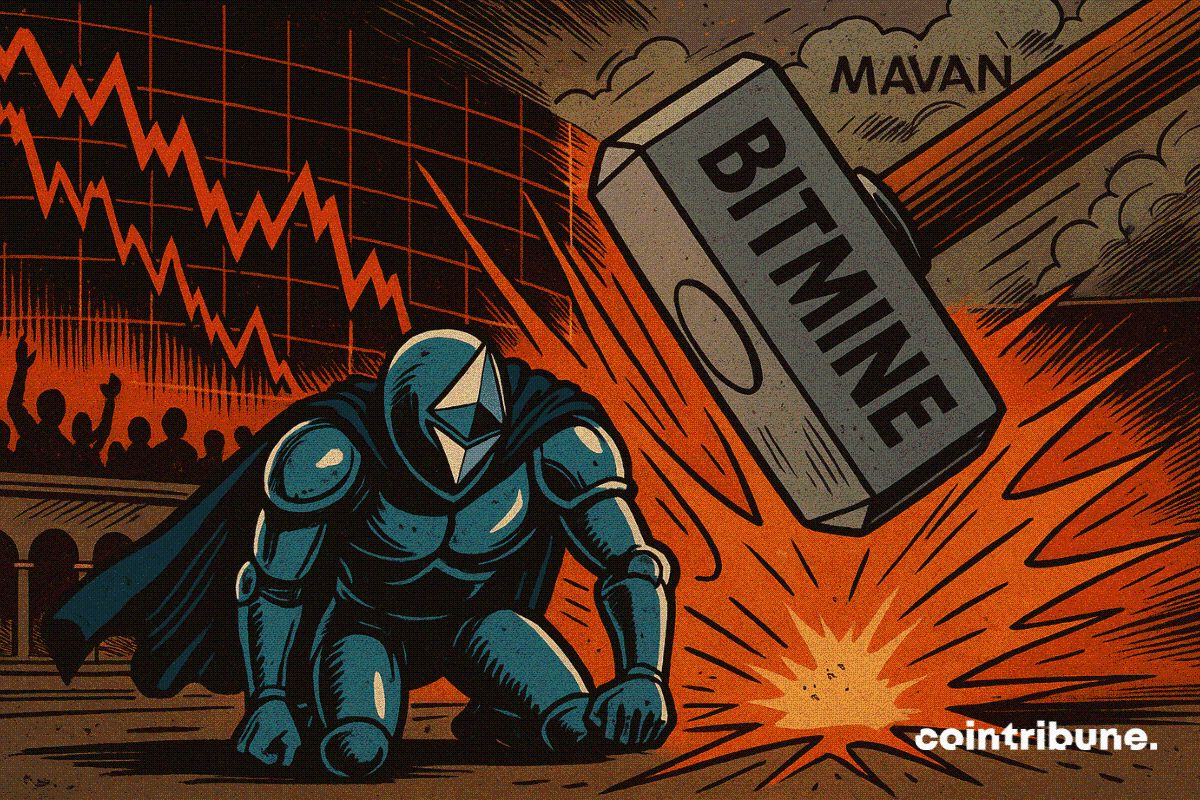Bitroot: Redefining Blockchain Performance with Parallel EVM Architecture

Over the past decade, blockchain scalability has remained the primary bottleneck preventing mass adoption. Ethereum, processing around 15 transactions per second (TPS), has long exposed the limits of serial execution models. Bitroot emerges as a new-generation Layer 1 blockchain that breaks through these constraints — achieving 100,000 TPS and 300 ms finality through a combination of Pipeline BFT consensus, optimistic parallelized EVM, state sharding, and BLS signature aggregation.
A Layered Architecture Built for Performance
Bitroot’s five-layer modular design — Storage, Network, Consensus, Protocol, and Application — ensures both scalability and maintainability.
The Storage Layer integrates distributed sharding to reduce state bloat and enable validation on ordinary hardware.
The Network Layer employs Kademlia DHT and GossipSub, optimized for large-scale data transfer.
The Consensus Layer, powered by Pipeline BFT, decouples consensus from execution — allowing new blocks to progress even before prior blocks are finalized.
The Protocol Layer introduces a parallel execution engine that remains fully EVM-compatible, supporting seamless migration for Ethereum-based applications.
The Application Layer provides SDKs and standardized interfaces for rapid DApp development.
This modularity enables Bitroot to evolve rapidly without disrupting existing infrastructure — a key differentiator from monolithic blockchain designs.
Pipeline BFT: Consensus at Assembly-Line Speed
Traditional BFT systems, such as Tendermint, are constrained by serialized block confirmation and high communication complexity (O(n²)). Bitroot’s Pipeline BFT reimagines consensus as a four-stage assembly line — Propose, Prevote, Precommit, and Commit — allowing multiple blocks to be processed concurrently.
This pipelined mechanism, combined with BLS signature aggregation, reduces confirmation latency to 300 milliseconds and compresses signature verification from O(n) to O(1). By decoupling consensus from execution and enabling batching, Bitroot achieves industry-leading scalability without sacrificing decentralization.
Optimistic Parallelized EVM: Unlocking Multicore Potential
Bitroot’s Optimistic Parallelized EVM (OPEVM) eliminates the single-threaded limitations of traditional EVMs.
It introduces a three-stage conflict detection system — pre-execution static analysis, in-execution dynamic monitoring, and post-execution global verification — ensuring both safety and efficiency under high concurrency.
Through smart transaction grouping, fine-grained read/write locks, and NUMA-aware scheduling, Bitroot maintains optimal CPU utilization (90%) and achieves up to 7–12× higher throughput compared to Ethereum’s serial EVM.
The result: deterministic parallelism without compromising correctness — a critical step toward AI-compatible blockchain computation.
State Sharding: True Horizontal Scalability
To support exponential growth, Bitroot implements state sharding by distributing account states across multiple shards. Each shard maintains an independent state tree, while a shard coordinator ensures atomicity and consistency via a two-phase commit protocol.
This design allows linear scalability — as the number of shards increases, throughput scales proportionally — providing a sustainable path for long-term growth.
Performance Validation and Ecosystem Integration
Benchmark testing on AWS infrastructure demonstrated 25,600 TPS, 1.2-second total latency, and 85% resource utilization, outperforming comparable Layer 1 networks by over 50×. Gas fees are reduced by up to 90%, positioning Bitroot as a practical alternative to Layer 2 solutions while retaining full decentralization.
Bitroot’s EVM compatibility allows developers to migrate Ethereum applications seamlessly — accelerating adoption across DeFi, NFT, gaming, and enterprise applications. Its upcoming AI integration framework further expands possibilities, enabling decentralized AI agents and on-chain machine learning models.
Conclusion: The Infrastructure for the Intelligent Web3 Era
Bitroot represents a major leap forward in blockchain engineering — transforming academic research into real-world performance.
By combining Pipeline BFT, Optimistic Parallelized EVM, and State Sharding, Bitroot provides a complete blueprint for high-performance blockchain systems.
It not only bridges the gap between performance and decentralization, but also lays the technical foundation for the convergence of AI and Web3.
As the demand for intelligent, scalable, and interoperable infrastructure grows, Bitroot stands ready to power the next generation of decentralized applications — from real-time finance to AI-driven ecosystems.
Disclaimer: The content of this article solely reflects the author's opinion and does not represent the platform in any capacity. This article is not intended to serve as a reference for making investment decisions.
You may also like
Hotcoin Research | Fusaka Upgrade Approaching: Analysis and Outlook on Ethereum Long and Short Positions
This article will review Ethereum's recent performance, provide an in-depth analysis of the current bullish and bearish factors facing Ethereum, and look ahead to its prospects and trends for the end of this year, next year, and the medium to long term. The aim is to help ordinary investors clarify uncertainties, grasp trends, and provide some reference to support more rational decision-making during key turning points.

Crypto Market Surges as Bitcoin Rebounds and Privacy Coins Shine
In Brief Bitcoin rebounded over the weekend, testing the $86,000 mark. Privacy-focused altcoins Monero and Zcash showed notable gains. Total market value surged, crossing the $3 trillion threshold again.

Crypto Markets Rebound as Traders Signal Seller Fatigue
In Brief Crypto markets rebounded amid significant liquidations and oversold RSI signals. Weekend trading conditions with thin liquidity influenced rapid price shifts. The rebound's sustainability remains uncertain, prompting scrutinous investor attention.

Cardano : Network security questioned after a major incident

